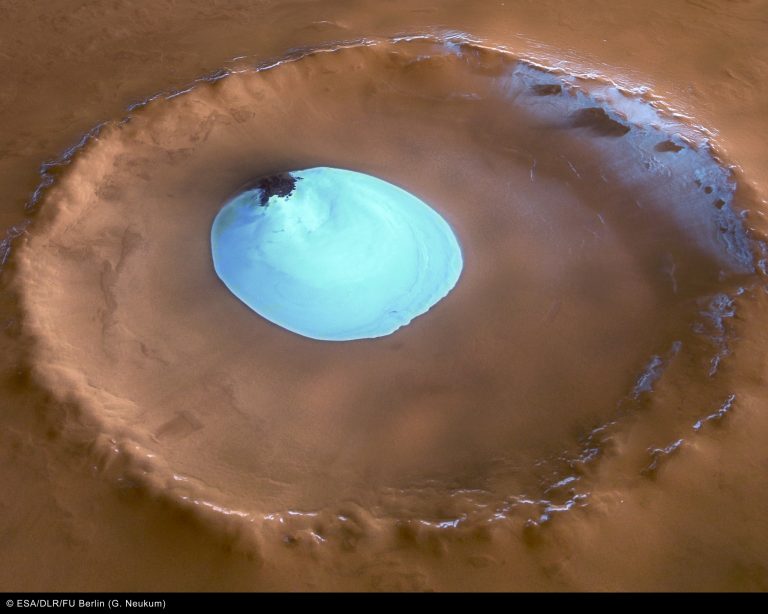
Minh Hua
A recent discovery of ice deposits on Mars made by a geologist at the United States Geological Survey (USGS) could put humanity one step closer to establishing a settlement on the planet.
Colin Dundas, a geologist of the USGS, published a finding in the journal Science highlighting the discovery of pure ice relatively close to the Martian surface. Finding ice on Mars is not new, but up until now, research has been inconclusive on the accessibility of the ice and whether or not the ice was usable.
Dundas’ analysis of the newly located ice’s blue hue concluded that the ice is pure and not mixed with large amounts of sediment that would require heavy filtration, unlike most other ice deposits found on the planet. According to The Washington Post, “in 2001, the Mars Odyssey spacecraft[‘s]… gamma-ray spectrometer found telltale hydrogen, which indicated Mars had enormous amounts of ice.” However, the findings were inconclusive on the depth, thickness, and composition of the ice.
Through high-definition images transmitted back to Earth by the Mars Reconnaissance Orbiter (MRO), Dundas observed thick layers of black-blue hue exposed on the side of several cliffs, called “scarps.”
An article from earlier this month in the National Geographic reported the team was able to determine that the layers were “large stores of underground ice buried only a meter or two below the surface.”
The team first hypothesized that the ice could be surface frost that would melt during the summer. However, the layers of ice persisted through the summer as any external frost left on the Martian surface evaporated. In fact, this process exposed thick deposits of ice and allowed the MRO to capture photos.
Science magazine quotes the director of the Center for Space Resources at the Colorado School of Mines in Golden, Angel Abbud-Madrid, saying that ice on Mars “would only be a useful resource if [it] were no more than a few meters below the surface.” However, Abbud-Madrid continues, “The ice cliffs promise abundant, accessible ice.” For the groups planning to send humans to Mars, this could represent a source of water that is easily accessible and plentiful.
NASA has committed to establishing a station on Mars that is “Earth independent” in the 2030s and claims that Mars is “the next tangible frontier for human exploration.” Russian President Vladimir Putin promised in 2013 that his country would launch a manned mission to Mars in 2018, and private organizations in the U.S. like SpaceX and Mars One plan to be there in the 2030s as well.
The ice cliffs are also “at surprisingly low martian latitudes,” according to Science, which makes them especially valuable to a human civilization that would most likely be solar powered.
Geologists are hopeful that ice cores could be extracted from these ice cliffs and brought back for research on Earth. Ice cores are samples of multiple layers of ice that contain small bubbles of air trapped inside which contain valuable atmospheric and climate data.
Studying ice cores collected in Antarctica and Greenland is a main method geologists used to study Earth’s past climate changes. Extraction of these cores on Mars would be a glimpse into the red planet’s past and could potentially reveal whether or not the planet’s atmosphere could have supported life.











